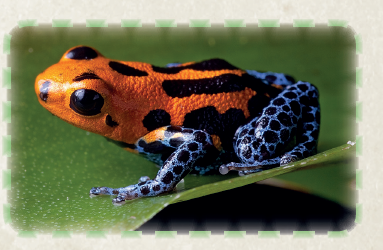Now We Know Why Poison Frogs Don’t Poison Themselves
Some frogs’ nervous systems resist a poisonous subject 200 times more powerful than morphine. Poison dart frogs, which live in the forests of South America, carry around a toxin 200 times more powerful than morphine. However, this poison doesn’t affect these frogs much. How? Their nervous systems have changed over time to fight off the powerful chemicals, according to a new study.
Rebecca Tarvin, a biologist at the University of Texas at Austin and a National Geographic Society grantee wants to understand how organisms could get neurotoxins, which require an animal to reorganise their nervous system. Poison frogs don’t make their own poison; they get it from eating mites and ants.
Predators such as snakes and scorpions use venom, which must enter another animal’s body by injury. These poisons don’t have to instantly kill. Instead, predators regularly use venom that paralyzes their prey.
A receptor is a type of protein on the outside of cells that transmits signals between the outside and the inside. Receptors are like locks that stay shut until they meet the correct key. When a molecule with just the right shape comes along, the receptor gets activated and sends a signal. Some small animals use tetrodotoxin, which blocks their holes in their skins. It is key to conducting electric signals down a nerve.
Some poison frogs carry a morphine-like compound called epibatidine, which sends messages between nerve cells. The researchers found that poison frogs that use epibatidine have developed a small genetic mutation that prevents the toxin from sticking to their receptors. Biologists still don’t know where poison frogs get epibatidine, which can easily kill a water buffalo. It’s clear that it’s coming from something they’re eating, but scientists haven’t tracked down the source. In fact, question marks surround most of poison frogs’ toxins.
The way that the lock changed suggests possible new ways to develop drugs to fight human disease. The study helps understand many things about the evolution of poisons—but many mysteries remain.
(Adapted from National Geographic and Sciencedaily Website)

